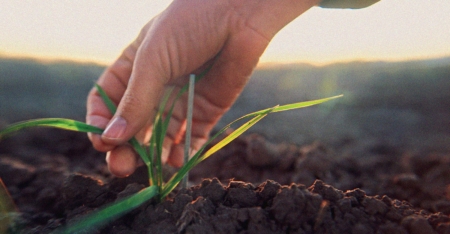Organic Standards Stem from the Soil
For almost 20 years since the “organic” certification first passed, there has been a debate surrounding growing methods. Some foods are grown in soil, and others are grown hydroponically in large buildings and under lights. There is a reason for both growing methods, but it is important that they be labeled differently.
Since the 1920s when organic food began to really take hold in the U.S., the term organic has referred to food grown in the earth without the use of GMOs or synthetic additives like pesticides, chemical fertilizers and dyes. In 2002, the U.S. Department of Agriculture implemented standards governing what can be labeled as organic, but there have been lingering questions and debate on what qualifies.
Organic farmers rely on soil that hasn’t been damaged by toxic pesticides or herbicides–they know the magic of the earth produces bounty for us with a beautiful interactive dance between the soil, the plants, the sun and water. We harvest and eat that bounty. We think that food grown this way is nutritious and delicious, good for the human body and less damaging to the environment. The organic label indicates to the customer that the product they are buying follows this soil story.
Hydroponic food is typically grown in a nutrient solution, not in the earth, and usually indoors in large buildings and under lights. It’s an efficient and technologically complex method of food production that will be an important contributor to food production in the future.
If the government wants to label food to aid the customer, then they should have a label that says “hydroponic” to inform the customer of the hydroponic story, in the same way we have an “organic” label for food grown in soil. These growing methods are both important, but because they are so different, they should have separate labels, assisting customers in making their food choices. And both methods are certainly better than current, conventional agricultural practices.
Let’s help people gain more transparency in their food choices. Organic is organic and hydroponic is hydroponic. This 20-year debate could come to an end when the National Organic Standards Board meets at the end of the month and makes a recommendation to the U.S. Department of Agriculture. If you would like to add your voice, please do so here by October 11, 2017.

